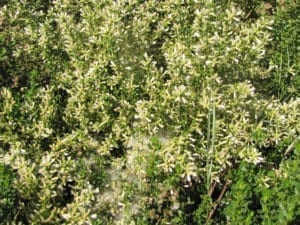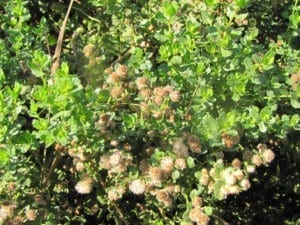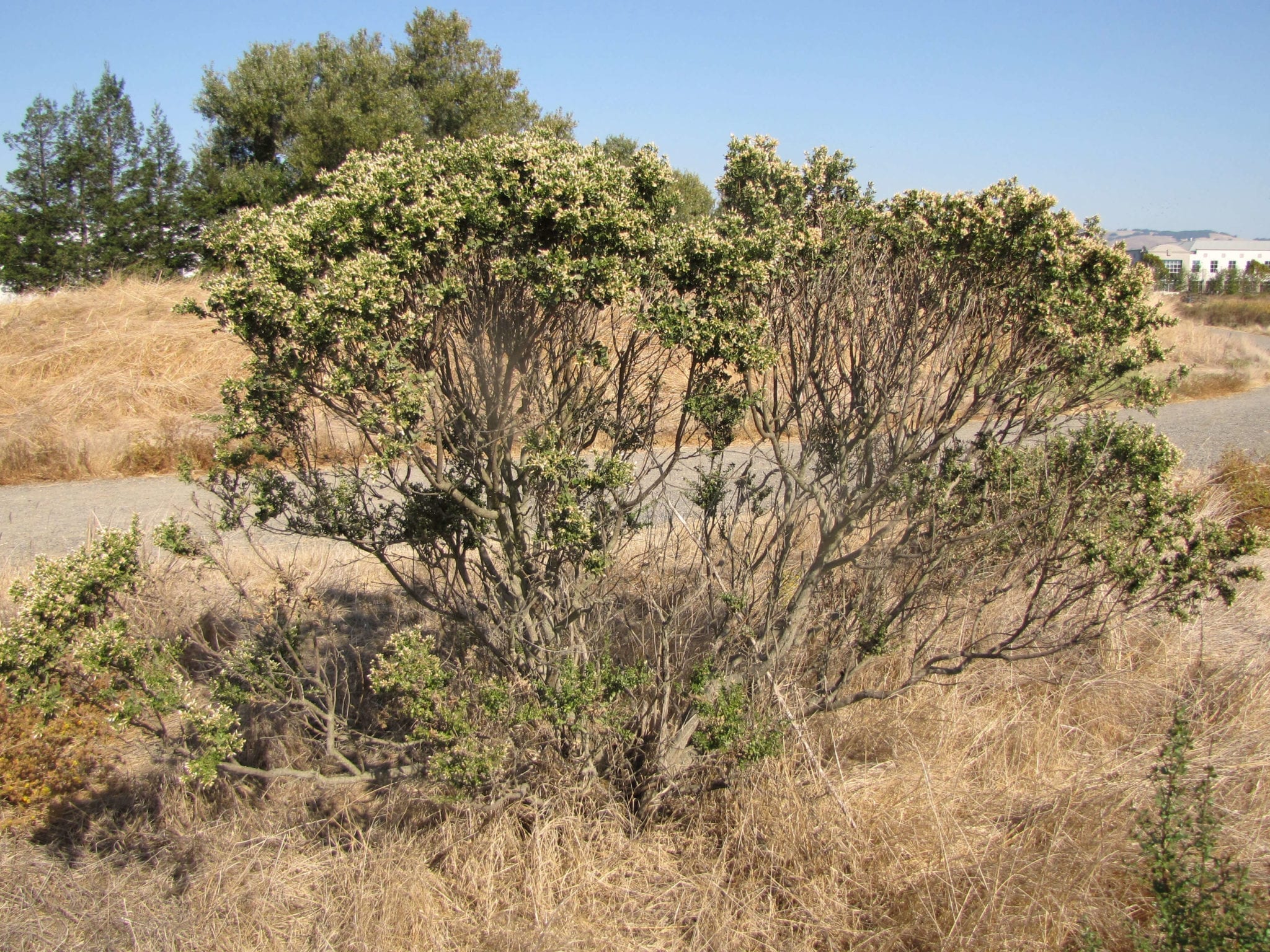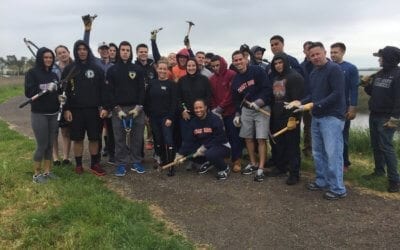Note open branching with leaves on exterior (leggy) forming a round shape.
From John Shribbs, 11-17
A common native upland evergreen shrub in the aster family found in many habitats from Mexico to Washington. It is a secondary pioneer that is self-seeding in open areas taking over grasslands, and then being succeeded by shade bearing shrubs and trees. The dwarf variety (2-4 feet tall) planted along Adobe Creek are probably nursery grown males and probably originated from coastal sandy habitats where it is native. The upright 6 to 10-foot tall round shrubs are important food source and habitat for many species of insects, birds, and animals. The early winter flowers provide important nectar for bees and other wasp, butterfly, and fly pollinators. It thrives on the steep coastlines, grasslands, woodlands, canyons and hillsides. and quickly occupies areas degraded by intense grazing and fire. It is a major species in the Coastal Scrub community which is similar to Coastal Sage Scrub community except it is missing drought deciduous species and has a large component of herbaceous species.

Stem and leaf structure. Small thick round to oval or egg shaped leaves, alternate on stems, with 5 to 10 teeth along the edge. Can have sticky surface (resinous).
Leaves are small, round to oval shaped, hairless (glabrous), and usually a little sticky and grow alternately on the stems. The waxy coating reduces the amount of moisture lost to evaporation into the air. The shape and architecture of the branches with small leaves suggest this plant is adapted to high winds, which we see most afternoons. It is drought and deer resistant and can grow in a wide range of pH (acid to basic) and highly saline (salty) soils, which is a great fit for the upland areas that are above the water line and stay dry over 6 months of our long dry summers. I like the puffy white seed heads that cover these plants in autumn (SEP to NOV) and watch them spread like dandelion seeds when disturbed. When flowering, it usually covered in bees and wasps, so approach slowly at that time. Male flowers are yellow, female flowers white.

White female flowers generate puffy seed heads that fly in the wind like dandelions.

Male flowers are more yellow and do not produce seeds so turn brown.
In landscapes, these shrubs can get leggy and unkept. They can tolerate severe pruning, simulating fire, and will resprout from the woody stems. They can be used in poor soils and hillside stabilization. It is becoming popular in native plant settings, especially the dwarf varieties that create a nice groundcover over large areas.
Coast Miwok Indians used the heated leaves to reduce swelling, and some Native Indians used the wood from this bush to make arrow shafts and for building houses.




0 Comments